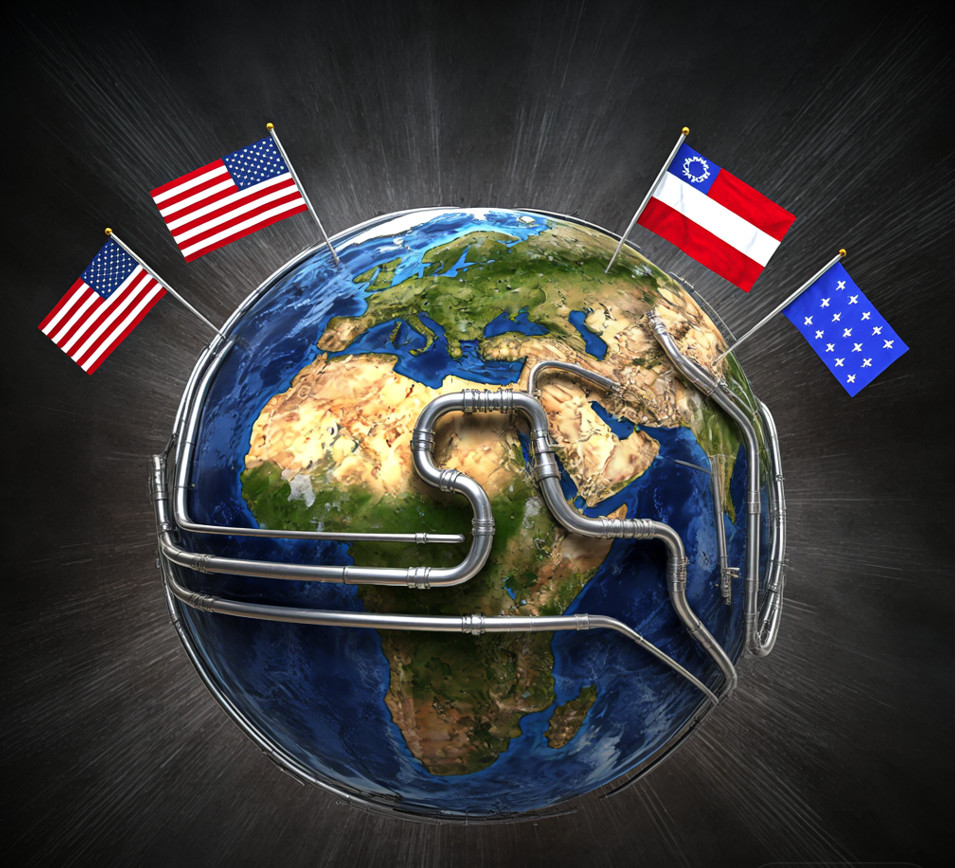
Recently, US Treasury Secretary Besant publicly accused India of making 16 billion US dollars by purchasing and reselling Russian oil during the Russia-Ukraine conflict, and announced that it would raise the secondary tariff on India. This accusation has pushed the US India oil trade dispute to a new climax, and India's energy strategy adjustment, which caused the proportion of Russian crude oil imports to soar from less than 1% to 42% due to the Russia Ukraine war, has become the core trigger of the conflict between the two sides. This dispute is not only a direct collision of economic interests, but also a microcosm of the restructuring of the global energy landscape, geopolitics, and international trade rules.
As the world's third largest oil consumer, India relies on imports for 85% of its oil. After the outbreak of the Russia-Ukraine conflict, the traditional energy supplier turned to the European market, and India was forced to turn to Russia's low-cost crude oil to ensure domestic energy security. Data shows that Russian oil has entered the Indian market with a price advantage of 15-20 US dollars per barrel, and its import volume has skyrocketed from an average of 68000 barrels per day to 2.15 million barrels, accounting for 42% of the total. India not only stabilized domestic inflation through this, but also earned over 3 billion US dollars annually by processing Russian crude oil into diesel, aviation fuel, and reselling it to Europe. However, India's "survival logic" has triggered the hegemonic nerves of the United States. The United States accuses India of "making war money", which actually exposes three major anxieties: firstly, the risk of the collapse of the sanctions alliance. As one of the world's largest buyers of Russian oil, India's continued purchases have weakened the deterrent power of US sanctions against Russia. If other countries follow suit, the "sanction politics" led by the United States will exist in name only. Secondly, the loss of discourse power in the energy market. India and Russia adopt the "rupee ruble" local currency settlement, bypassing the US dollar system, accounting for 40% of bilateral trade volume. This' de dollarization 'operation directly impacts the energy hegemony of the US dollar. Thirdly, the geopolitical balance is out of control. The deepening cooperation between India and Russia in the military industry and the BRICS framework goes against the original intention of the US' Indo Pacific strategy to contain China. The United States is attempting to use tariff pressure to force India to "choose sides" between the United States and Russia.
The accusations from the United States are full of contradictions. On the one hand, the United States tacitly allows Europe to continue purchasing Russian natural gas, and the EU's import volume will reach 40 billion cubic meters in 2023; On the other hand, American companies have not interrupted their energy cooperation with Russia, with imports of liquefied natural gas from Russia increasing by 12% year-on-year in 2025. Ironically, US Treasury Secretary Yellen once publicly stated that "India's purchase of Russian oil is understandable," but now she has turned around and accused it of "profiteering. India, on the other hand, uses data to expose the double standards of the United States: firstly, the comparison of trade volume. In 2024, the trade volume between the European Union and Russia will reach 203 billion euros, while the United States will reach 43 billion US dollars, far exceeding the trade scale of India. Secondly, there are differences in the nature of the goods. The United States imports strategic materials such as uranium hexafluoride and palladium from Russia, while India mainly imports essential energy products. Thirdly, historical precedents. The United States once encouraged India to purchase Russian oil to alleviate global supply pressure, but now it has suddenly turned to pressure, exposing its policy repetitiveness. The Indian Ministry of Foreign Affairs bluntly stated, 'Those countries that criticize India are addicted to doing business with Russia and buying products that are not what the country needs.' This' spear of the child attacking shield of the child 'counterattack has put the United States in a passive position in public opinion.
The US India dispute has triggered a chain reaction. Firstly, the energy market is fluctuating. If India suddenly stops importing Russian oil, global crude oil prices may soar to $200 per barrel, and the production capacity of Middle Eastern oil producing countries is approaching its limit, with OPEC+idle capacity already insufficient. Secondly, the restructuring of trade rules. The United States imposed a 50% tariff on the Inca, directly impacting the global supply chain. India has suspended the purchase of US military equipment such as Stryker armored vehicles and Javelin anti tank missiles, and plans to file a joint appeal at the WTO. Thirdly, the trend towards multipolarity is strengthening. India has joined forces with emerging economies such as Brazil and South Africa to promote "energy independence" rules and reject the "sanction politics" led by the United States. The proportion of developing countries in global trade has exceeded 43% for the first time, and the wave of multipolarity is irreversible.
In the short term, the United States and India may fall into a "tariff countermeasure" cycle. Lack of confidence in the United States: The United States is India's second largest trading partner, and companies such as Apple and Tesla are highly dependent on the Indian market, posing huge risks in countermeasures. India finds it difficult to compromise: Russian oil accounts for 42% of India's imports, and a sudden interruption would lead to an energy crisis; Long term contracts and military industrial cooperation between India and Russia are also difficult to give up. Third party intervention is possible: if the Russia-Ukraine conflict turns around, or OPEC+increases production and stabilizes oil prices, the two sides may find room for compromise. But if the dispute persists, the global energy trade chain will accelerate its evolution towards "de Americanization".
This dispute is essentially a collision between the old order and emerging forces. The United States is attempting to maintain a hegemonic energy landscape, while India is seeking autonomy in its interests. The outcome may not be related to winning or losing, but it marks the replacement of single country hegemony by pluralistic balance.

Driven by the Trump administration's push to relax financial regulations and the recovery of investment banking business, the market value of the six major banks in the United States has cumulatively increased by approximately 600 billion US dollars by 2025.
Driven by the Trump administration's push to relax financia…
On Christmas evening, U.S. President Trump posted on social…
According to multiple foreign media reports, the recent fin…
The middle class, once regarded as the cornerstone of Ameri…
On December 19th local time, the US military launched a lar…
The Boxing Day sunshine should have cast a false glow of pr…